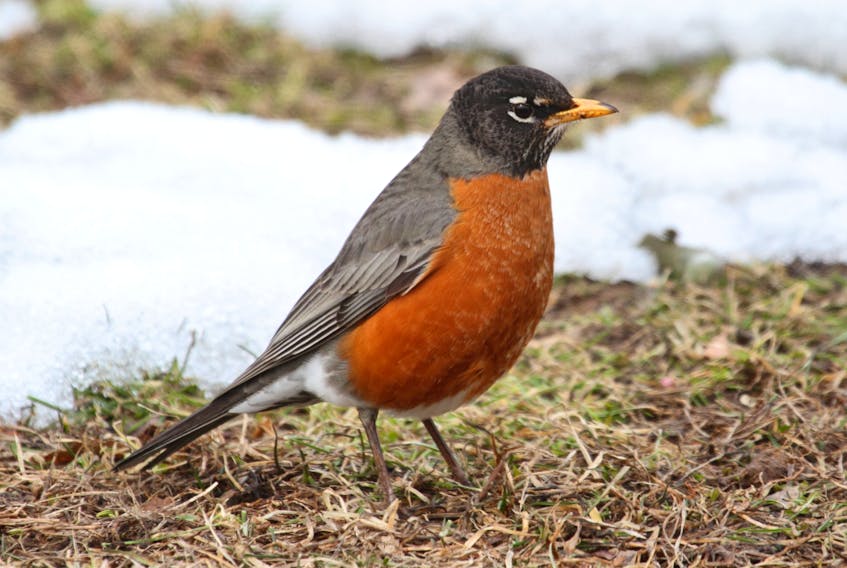The robins you may be seeing around your backyards aren't really a sign of an early spring. They're looking for supplementary food to make it through winter.
David Currie, past president of the Nova Scotia Bird Society, said resident birds — and robins in particular— like to forage for wild food crops like berries or other edibles along the headlands and anywhere they can find wild food.
That food tends to diminish over time, so with less food in the woods, they tend to come into the subdivisions to forage where people have planted fruit trees in their yards.
"Some robins migrate a long distance and other robins will just stay put or just move short distances instead of long migration distances," Currie said in a recent interview.
"That's what we're finding right now. And they'll start singing not long from now and everything will be springy again."
Bad weather a factor in sightings
He said weather also has an influence with situations like last week's ice storm leaving food sources coated in ice.
"A lot of times you'll see them kind of scrounging around looking for places that they can find food that's not covered in ice. So (at) this time, they're fairly vulnerable in that as spring approaches, we get (these) mixed weather fronts that come in where there's a lot of ice and rain and that kind of thing, which is hard on them. So people will find them in their backyards kind of making short supply of the fruit on their berry trees that they have in their yards."
Bird lovers can choose to either help them out by putting fruit out or leave them to their own devices, he said.
"The system has worked for years in a positive way over time, so if they don't feed, there may be a shortage of robins the following year, but they will bounce back," Currie said. "(For) individual robins that happen to go in looking for food, throwing out pieces of apple or blueberries that may be in the freezer, those kinds of things will help them get through those really, really bad days that we could still have between now and when the real spring robins start coming back."
Wait till March's end
He hasn't heard of any unusual birds making early visits to Nova Scotia yet.
"So far as I know, we're on track for a typical winter," he said. "Cardinals are singing, song sparrows are singing. They're all beginning their territorial stands, so right now, in particular, many people are reporting cardinals and song sparrows, which have over-wintered, by the way, so they're resident. These aren't birds that have come back. They're here already and they're just starting to stake out their territories."
That means there's more birdsong on the air now than there was a month ago. He credits that to the days getting longer, bringing more sunshine.
"By the end of March we should start to see the very early starts to bird migrations such as red-winged blackbirds and common grackles. Those birds will be coming by the end of March and in the next 30 days or so we'll start seeing some of the long-distance migrants start to come back."









